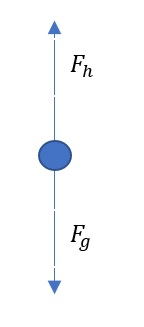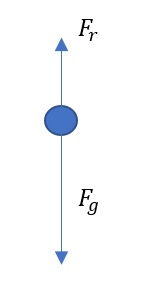Physics: Principles and Problems
9th Edition
Elliott, Haase, Harper, Herzog, Margaret Zorn, Nelson, Schuler, Zitzewitz
ISBN: 9780078458132
Textbook solutions
Chapter 1: A Physics Toolkit
Section 1.1: Mathematics and Physics
Section 1.2: Measurement
Section 1.3: Graphing Data
Page 24: Assessment
Page 29: Standardized Test Practice
Page 5: Practice Problems
Page 10: Section Review
Page 18: Practice Problems
Page 19: Section Review
Chapter 2: Representing Motion
Section 2.1: Picturing Motion
Section 2.2: Where and When?
Section 2.3: Position-Time Graphs
Section 2.4: How Fast?
Page 52: Assessment
Page 55: Standardized Test Practice
Page 39: Practice Problems
Page 42: Section Review
Page 45: Practice Problems
Page 47: Section Review
Chapter 3: Accelerated Motion
Section 3.1: Acceleration
Section 3.2: Motion with Constant Acceleration
Section 3.3: Free Fall
Page 80: Assessment
Page 85: Standardized Test Practice
Page 61: Practice Problems
Page 64: Section Review
Page 65: Practice Problems
Page 71: Section Review
Page 74: Practice Problems
Page 75: Section Review
Chapter 4: Forces in One Dimension
Section 4.1: Force and Motion
Section 4.2: Using Newton’s Laws
Section 4.3: Interaction Forces
Page 112: Assessment
Page 117: Standardized Test Practice
Page 89: Practice Problems
Page 95: Section Review
Page 97: Practice Problems
Page 101: Section Review
Page 104: Practice Problems
Page 107: Section Review
Chapter 5: Forces in Two Dimensions
Section 5.1: Vectors
Section 5.2: Friction
Section 5.3: Force and Motion in Two Dimensions
Page 140: Assessment
Page 145: Standardized Test Practice
Page 121: Practice Problems
Page 125: Section Review
Page 128: Practice Problems
Page 130: Section Review
Page 133: Practice Problems
Page 135: Section Review
Chapter 6: Motion in Two Dimensions
Section 6.1: Projectile Motion
Section 6.2: Circular Motion
Section 6.3: Relative Velocity
Page 164: Assessment
Page 169: Standardized Test Practice
Page 150: Practice Problems
Page 152: Section Review
Page 156: Section Review
Page 156: Practice Problems
Page 159: Practice Problems
Page 159: Section Review
Chapter 7: Gravitation
Section 7.1: Planetary Motion and Gravitation
Section 7.2: Using the Law of Universal Gravitation
Page 190: Assessment
Page 195: Standardized Test Practice
Page 174: Practice Problems
Page 178: Section Review
Page 181: Practice Problems
Page 185: Section Review
Chapter 8: Rotational Motion
Section 8.1: Describing Rotational Motion
Section 8.2: Rotational Dynamics
Section 8.3: Equilibrium
Page 222: Assessment
Page 227: Standardized Test Practice
Page 200: Section Review
Page 200: Practice Problems
Page 203: Practice Problems
Page 210: Section Review
Page 215: Practice Problems
Page 217: Section Review
Chapter 9: Momentum and Its Conservation
Section 9.1: Impulse and Momentum
Section 9.2: Conservation of Momentum
Page 250: Assessment
Page 255: Standardized Test Practice
Page 233: Practice Problems
Page 235: Section Review
Page 238: Practice Problems
Page 245: Section Review
Chapter 10: Energy, Work, and Simple Machines
Section 10.1: Energy and Work
Section 10.2: Machines
Page 278: Assessment
Page 283: Standardized Test Practice
Page 261: Practice Problems
Page 265: Section Review
Page 272: Practice Problems
Page 273: Section Review
Chapter 11: Energy and Its Conservation
Section 11.1: The Many Forms of Energy
Section 11.2: Conservation of Energy
Page 306: Assessment
Page 311: Standardized Test Practice
Page 287: Practice Problems
Page 292: Section Review
Page 297: Practice Problems
Page 301: Section Review
Chapter 12: Thermal Energy
Section 12.1: Temperature and Thermal Energy
Section 12.2: Changes of State and the Laws of Thermodynamics
Page 336: Assessment
Page 339: Standardized Test Practice
Page 317: Practice Problems
Page 322: Section Review
Page 325: Practice Problems
Page 331: Section Review
Chapter 13: State of Matter
Section 13.1: Properties of Fluids
Section 13.2: Forces Within Liquids
Section 13.3: Fluids at Rest and in Motion
Section 13.4: Solids
Page 368: Assessment
Page 373: Standardized Test Practice
Page 344: Practice Problems
Page 348: Section Review
Page 353: Practice Problems
Page 358: Section Review
Page 362: Practice Problems
Page 363: Section Review
Chapter 14: Vibrations and Waves
Section 14.1: Periodic Motion
Section 14.2: Wave Properties
Section 14.3: Wave Behavior
Page 396: Assessment
Page 401: Section Review
Page 386: Practice Problems
Page 386: Section Review
Chapter 15: Sound
Section 15.1: Properties of Detection of Sound
Section 15.2: The Physics of Music
Page 424: Assessment
Page 429: Standardized Test Practice
Page 405: Practice Problems
Page 410: Section Review
Page 416: Practice Problems
Page 419: Section Review
Chapter 16: Fundamentals of Light
Section 16.1: Illumination
Section 16.2: The Wave Nature of Light
Page 452: Assessment
Page 455: Standardized Test Practice
Page 436: Practice Problems
Page 438: Section Review
Page 447: Section Review
Page 447: Practice Problems
Chapter 17: Reflections and Mirrors
Section 17.1: Reflection from Plane Mirrors
Section 17.2: Curved Mirrors
Page 478: Assessment
Page 483: Standardized Test Practice
Page 460: Practice Problems
Page 463: Section Review
Page 469: Practice Problems
Page 473: Section Review
Chapter 18: Refraction and lenses
Section 18.1: Refraction of Light
Section 18.2: Convex and Concave Lenses
Section 18.3: Applications of Lenses
Page 508: Assessment
Page 513: Standardized Test Practice
Page 487: Practice Problems
Page 492: Section Review
Page 496: Practice Problems
Page 499: Section Review
Chapter 19: Interference and Diffraction
Section 19.1: Interference
Section 19.2: Diffraction
Page 536: Assessment
Page 539: Standardized Test Practice
Page 519: Practice Problems
Page 523: Section Review
Page 526: Practice Problems
Page 531: Section Review
Chapter 20: Static Electricity
Section 20.1: Electric Charge
Section 20.2: Electric Force
Page 558: Assessment
Page 561: Standardized Test Practice
Page 552: Practice Problems
Page 553: Section Review
Chapter 21: Electric Fields
Section 21.1: Creating and Measuring Electric Fields
Section 21.2: Applications of Electric Fields
Page 584: Assessment
Page 589: Standardized Test Practice
Page 565: Practice Problems
Page 568: Section Review
Page 571: Practice Problems
Page 579: Section Review
Chapter 22: Current Electricity
Section 22.1: Current and Circuits
Section 22.2: Using Electric Energy
Page 610: Assessment
Page 615: Standardized Test Practice
Page 594: Practice Problems
Page 600: Section Review
Page 603: Practice Problems
Page 605: Section Review
Chapter 23: Series and Parallel Circuits
Section 23.1: Simple Circuits
Section 23.2: Applications of Circuits
Page 636: Assessment
Page 641: Standardized Test Practice
Page 619: Practice Problems
Page 626: Section Review
Page 630: Practice Problems
Page 631: Section Review
Chapter 24: Magnetic Fields
Section 24.1: Magnets: Permanent and Temporary
Section 24.2: Forces Caused by Magnetic Fields
Page 664: Assessment
Page 669: Standardized Test Practice
Page 647: Practice Problems
Page 651: Section Review
Page 654: Practice Problems
Page 659: Section Review
Chapter 25: Electromagnetic Induction
Section 25.1: Electric Current from Changing Magnetic Fields
Section 25.2: Changing Magnetic Fields Induce EMF
Page 690: Assessment
Page 695: Standardized Test Practice
Page 675: Practice Problems
Page 678: Section Review
Page 684: Practice Problems
Page 685: Section Review
Chapter 26: Electromagnetism
Section 26.1: Interactions of Electric and Manetic Fields and Matter
Section 26.2: Electric and Magnetic Fields in Space
Page 718: Assessment
Page 721: Standardized Test Practice
Page 700: Practice Problems
Page 704: Section Review
Page 706: Practice Problems
Page 713: Section Review
Chapter 27: Quantum Theory
Section 27.1: A Particle Model of Waves
Section 27.2: Matter Waves
Page 742: Assessment
Page 745: Standardized Test Practice
Page 730: Practice Problems
Page 734: Section Review
Page 736: Practice Problems
Page 737: Section Review
Chapter 28: The Atom
Section 28.1: The Bohr Model of the Atom
Section 28.2: The Quantum Model of the Atom
Page 770: Assessment
Page 773: Standardized Test Practice
Page 757: Practice Problems
Page 759: Section Review
Chapter 29: Solid-State Electronics
Section 29.1: Conduction in Solids
Section 29.2: Electronic Devices
Page 794: Assessment
Page 797: Standardized Test Practice
Page 778: Practice Problems
Page 783: Section Review
Page 786: Practice Problems
Page 789: Section Review
Chapter 30: Nuclear Physics
Section 30.1: The Nucleus
Section 30.2: Nuclear Decay and Reactions
Section 30.3: The Building Blocks of Matter
Page 828: Assessment
Page 831: Standardized Test Practice
Page 801: Practice Problems
Page 805: Section Review
Page 808: Practice Problems
Page 814: Section Review
Page 821: Practice Problems
Page 823: Section Review
All Solutions
Page 95: Section Review
Exercise 9
Result
1 of 1
mass (c), inertia (c), push of a hand (a), friction (a), air resistance (a), spring force (a), gravity (b),
acceleration (c)
acceleration (c)
Exercise 10
Solution 1
Solution 2
Step 1
1 of 2
$textbf{Inertia can be felt.}$ You can feel the inertia of a pencil or a book through your hand. Without an outside force acting upon either objects, they will remain at rest unless you apply a force that will change these objects’ velocity.
Result
2 of 2
$$
textbf{Inertia can be felt in both a pencil and a book.}
$$
textbf{Inertia can be felt in both a pencil and a book.}
$$
Step 1
1 of 2
The answer is $textbf{yes, in both cases}$. We can feel the inertia of any object. In order to move an object we have to change its speed, which means we have to accelerate it. $textbf{When we accelerate an object, we act on it by some force}$, and according to $textbf{Newton’s third law}$, then the object also acts on us by a force of equal amount and in the opposite direction. The difference between a book and a pen is that they have different masses, so the forces they act on us will be different.
Result
2 of 2
The answer is yes in both cases.
Exercise 11
Step 1
1 of 2
System:Bag of sugar
Agents:Hand, Earth
$F_g$ force of gravity
$F_h$ force of hand acting upon bag

Result
2 of 2
See the explanation.
Exercise 12
Step 1
1 of 2
If we act with some force on the book in forward direction, it does $textbf{not necessarily}$ mean that it will accelerate in that direction. It is possible that the $textbf{book moves backwards}$, if we then $textbf{act on the book forwards}$, we will $textbf{slow down the book}$ but it will still move in the $textbf{opposite direction of the force}$.
Result
2 of 2
Not necessarily.
Exercise 13
Step 1
1 of 2
System: Bucket with water
Agents: Earth, rope
$F_g$ force of gravity
$F_r$ force which rope acts on bucket

Result
2 of 2
See the explanation.
Exercise 14
Step 1
1 of 4
The key detail we read from the problem is that a force of $1 mathrm{N}$ is the only force acting on the block. This tells us that it is this force that is the cause of the acceleration.
The second newtonow law gives us an expression for acceleration:
$$
F=ma rightarrow a=dfrac{F}{m}
$$
Step 2
2 of 4
Known:
$$
begin{align*}
a_2&=3a_1\
F&=1 mathrm{N}
end{align*}
$$
Unknown:
$$
m_1=xm_2
$$
Step 3
3 of 4
Now let us just include the known in the expression for acceleration:
$$
begin{align*}
a_2&=3a_1 \
dfrac{1 mathrm{N} }{m_2}&=3dfrac{1 mathrm{N} }{m_1}
end{align*}
$$
Multiply the above expression by $m_1 m_2$ and the force cancel out:
$$
begin{align*}
dfrac{m_1m_2}{m_2}&=3dfrac{m_1m_2 }{m_1}\
m_1 &= 3 m_2\
x&=3
end{align*}
$$
Result
4 of 4
The mass of the first block is three times larger
Haven't found what you were looking for?
Search for samples, answers to your questions and flashcards

unlock
